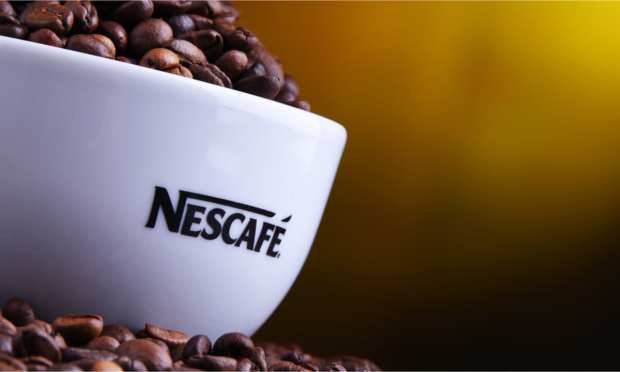Nestlé Perks Up With High At-Home Coffee Sales Growth

While many businesses are in a period of flux, as some newly vaccinated consumers begin to lay the foundation for their new normal and other still-vulnerable consumers stay at home, few face as uncertain a landscape as international brands with both at-home and away-from-home products. As Nestlé’s results for the first three months of 2021 show, however, one thing that most consumers can agree on is that we need to caffeinate hard to get through this moment in time — the company saw organic sales growth of 7.7 percent for the quarter, led by rising coffee sales, the company announced in a news release Thursday (April 22).
This marks the company’s strongest quarter in a decade, reports Reuters.
“Coffee was the largest contributor to growth,” the release states, “fueled by strong demand for Nespresso, Nescafé and Starbucks products.”
These results come as consumers who have grown used to working remotely purchase coffee to enjoy in their kitchens to power them through their at-home workday. As a Nestlé spokesperson told The Wall Street Journal, “We clearly benefited from people enjoying their coffee at home rather than in the office or the cafeteria.”
Much of this purchasing occurred online, both through retailer partners and through Nestlé’s direct-to-consumer (D2C) channels.
“[Coffee] growth was fueled by continued strong momentum in e-commerce and innovation,” the release states. “New products included the expansion of the World Explorations range, including Buenos Aires and Shanghai, and new limited editions in the Master Origins range, and a new Master Origins offering, Nicaragua La Cumplida Refinada.”
Nespresso’s World Explorations line of coffees, available through Nespresso’s D2C online shop, launched in January, as did the Master Origins line, which added a new coffee in March. Meanwhile, Nescafé and Nestlé’s Starbucks-branded products are primarily purchased in stores or through third-party online retailers.
Sales of the company’s coffee brands were high across international markets — North America; Latin America; “Zone Europe, Middle-East and North Africa (EMENA);” “Zone Asia, Oceania and sub-Saharan Africa (AOA);” China and Southeast Asia all saw elevated coffee sales. Nespresso saw its sales rise 17 percent, with the Americas, EMENA and AOA all posting double-digit growth. The company did not specifically report the organic growth of its other coffee brands, but noted that they performed strongly. Given this outperformance of the D2C brand, it is possible that, as the chain continues acquiring smaller brands, D2C commerce may remain a priority.
However, given that these sales have come in large part from the need for consumers around the world to remain at home, it may be too soon to say how these sales will trend going forward.
“The one market that we look at very closely is China,” Nestlé CEO Mark Schneider said on a call with analysts. “And there you’re seeing a nice restart of the out-of-home activities, including of course coffee, and that’s going really well. It doesn’t lead to major problems on the at-home side … from what we’ve seen, in particular Starbucks out-of-home bodes well for other markets.”
Still, he added, with all the uncertainty, and given that China is a country that “still has very low per capita consumption of coffee,” it remains “pretty hard to guess” what the post-pandemic future of these at-home coffee brands will look like.
